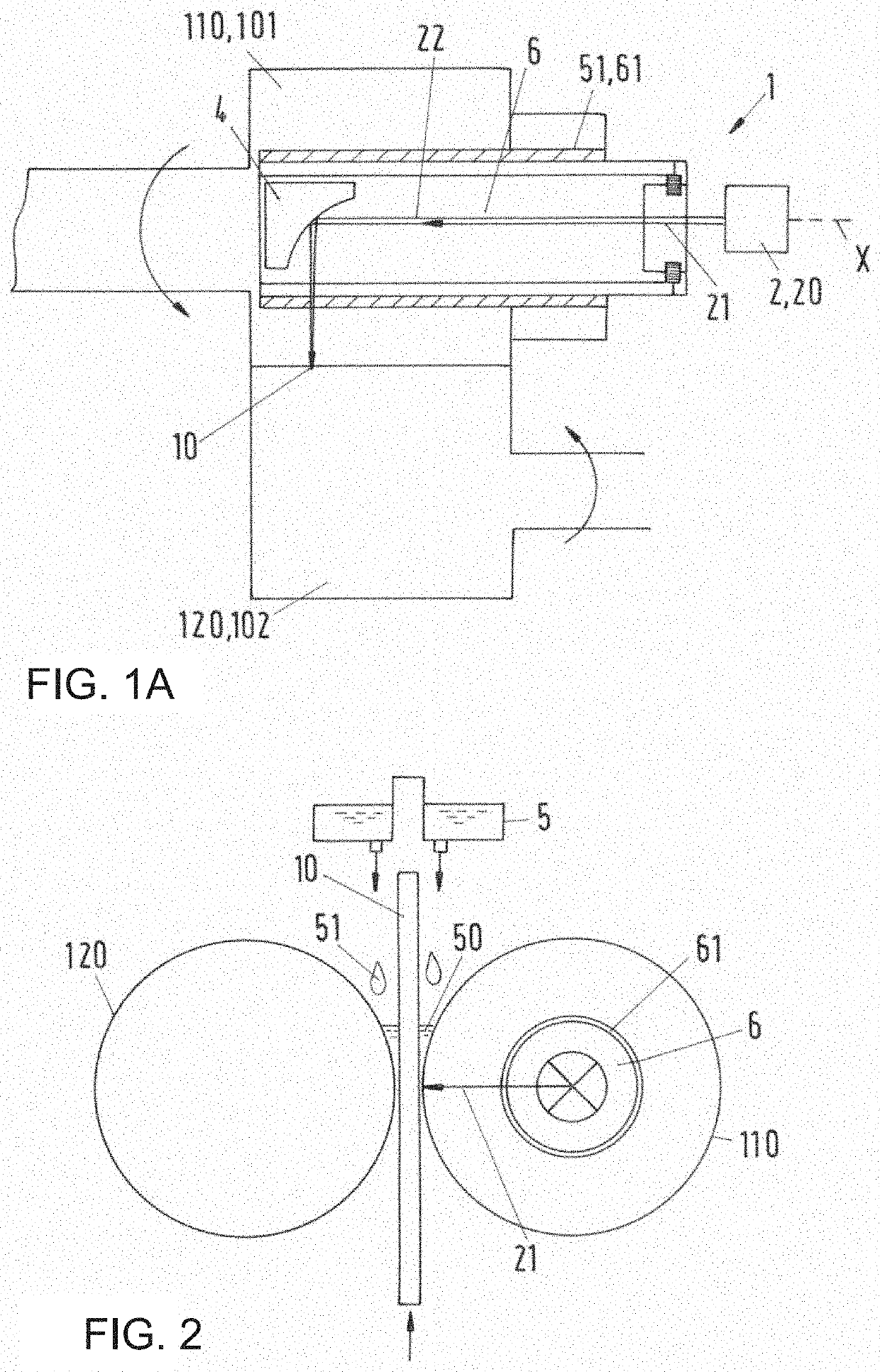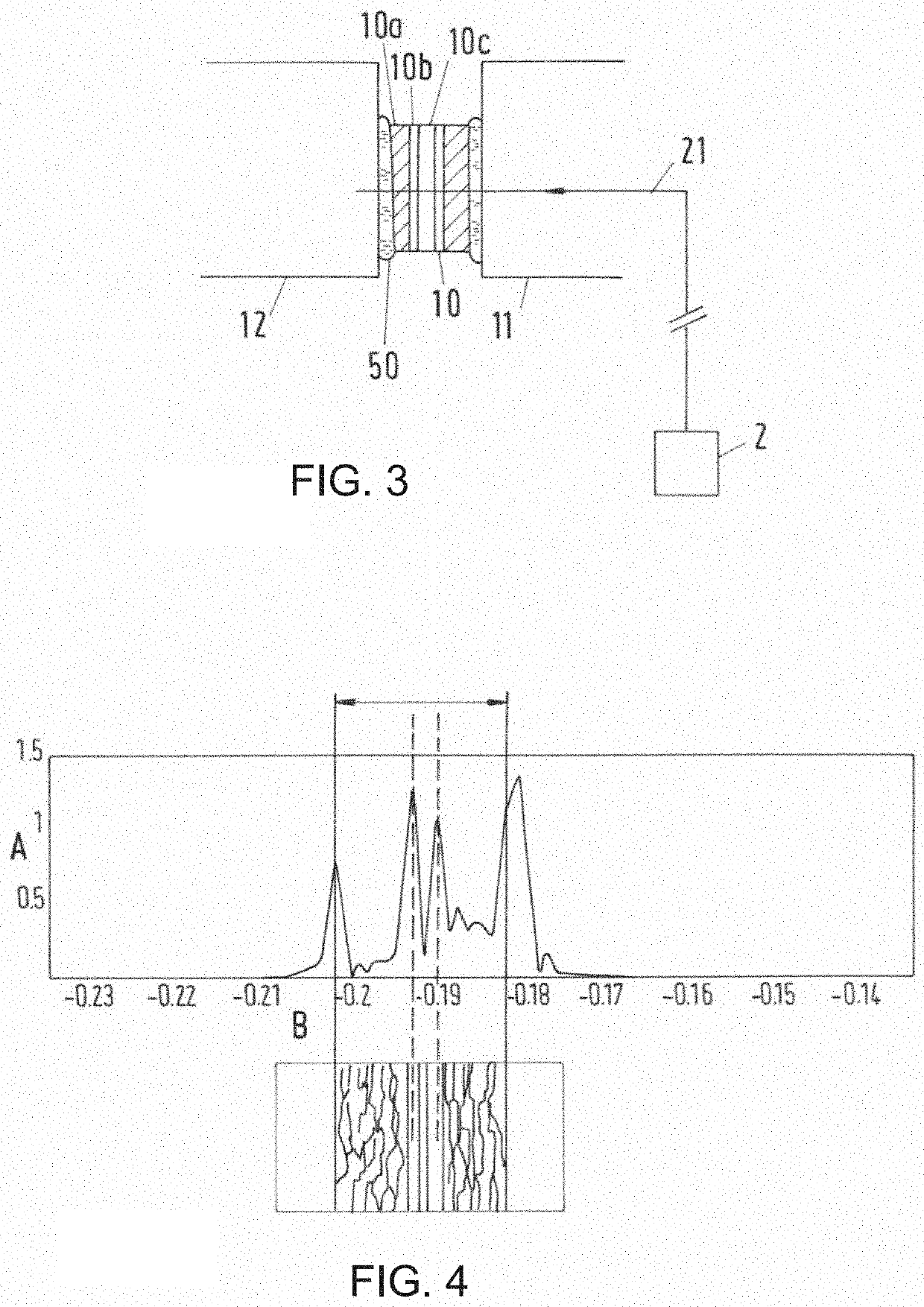Device and a method for analyzing a multilayer film
a multi-layer film and device technology, applied in the field of devices and methods for analyzing multi-layer films, can solve the problems of limited measuring speed, high preparation effort for microtome sections, and inability to measure the total thickness, so as to avoid immersion preferably, increase the dynamic of interference signals, and achieve the effect of high demand for immersion fluid for this type of application
- Summary
- Abstract
- Description
- Claims
- Application Information
AI Technical Summary
Benefits of technology
Problems solved by technology
Method used
Image
Examples
Embodiment Construction
[0070]FIG. 1A shows a schematic representation of a device 1 according to an embodiment of the invention for determining a layer thickness in a multilayer film 10.
[0071]The device 1 comprises a radiation source 2 which can be designed as a laser. In the operating state, the radiation source 2 generates an electromagnetic primary radiation 21. The device additionally comprises a detector (not shown here) for detecting an electromagnetic secondary radiation 22 emitted by the multilayer film 10, which secondary radiation 22 is induced by an interaction of the primary radiation 21 with the multilayer film 10. If the method according to an embodiment of the invention is performed as an OCT method, the device can additionally comprise an interferometer, wherein the detector then detects an interference spectrum. For this purpose, a unit 2, 20 comprises the laser 2 as radiation source, as well as the interferometer and an OCT evaluation unit with the detector.
[0072]In addition, the device ...
PUM
| Property | Measurement | Unit |
|---|---|---|
| refractive index | aaaaa | aaaaa |
| refractive index | aaaaa | aaaaa |
| refractive index | aaaaa | aaaaa |
Abstract
Description
Claims
Application Information
 Login to View More
Login to View More - R&D
- Intellectual Property
- Life Sciences
- Materials
- Tech Scout
- Unparalleled Data Quality
- Higher Quality Content
- 60% Fewer Hallucinations
Browse by: Latest US Patents, China's latest patents, Technical Efficacy Thesaurus, Application Domain, Technology Topic, Popular Technical Reports.
© 2025 PatSnap. All rights reserved.Legal|Privacy policy|Modern Slavery Act Transparency Statement|Sitemap|About US| Contact US: help@patsnap.com



